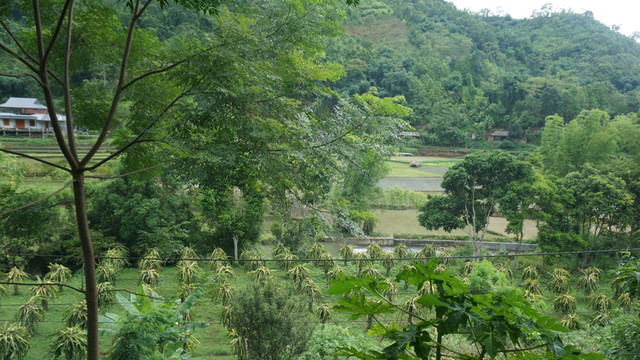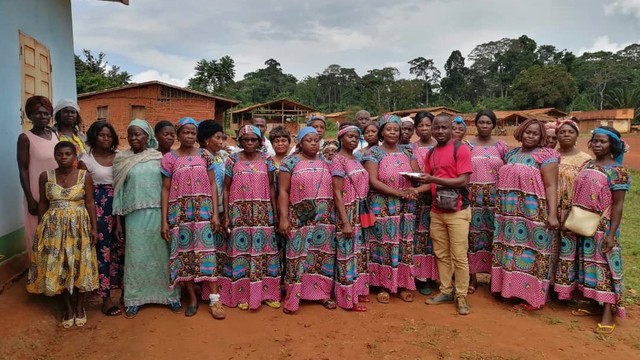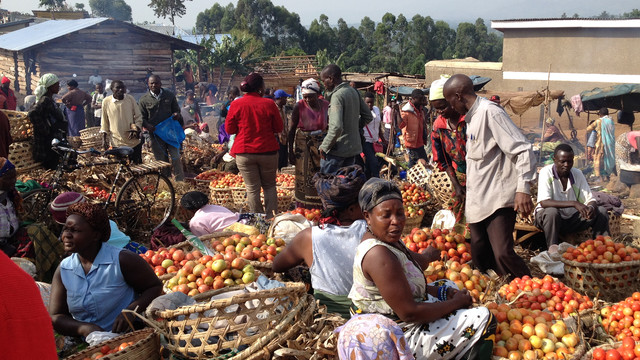If you go down to the woods today, you're sure of a big surprise…
Bwindi Impenetrable National Park is a magnet for tourists wanting to see gorillas in the wild, but surrounding communities don't get much revenue from the tourist trade. Dilys Roe describes a project that is helping local people who live close to the edge of the forest to develop products and activities that will attract visitors – and much-needed income.


A map shows new walking trails at the edge of the park that have been developed to encourage tourists to explore more of Bwindi and spend money on local products (Photo: Copyright Peter Nizette)
Remarkable things can happen when you set enthusiastic tourism development professionals loose in a forest.
Too often, community-based tourism initiatives are developed by NGOs and, while well-meaning, are often not grounded in market realities. In other words, they tend to be based on what the NGO thinks would be best rather than on what tourists and tour operators themselves say they like.
Bwindi Forest in Southwest Uganda is a World Heritage Site, famous for being home to a population of highly endangered mountain gorillas. It used to also be home to the indigenous Batwa people, but they were evicted in 1991 when the forest was declared a National Park.
They and thousands of other people live around the edge of the forest in a region of high human population density and high poverty.
Research conducted between 2012 and 2015 by IIED, Oxford University and the Ugandan research organisation the Institute for Tropical Forest Conservation revealed that many of these local people – particularly the poorest who live closest to the forest – had a negative attitude to the park and to conservation.
This was largely because they felt that conservation was "unfair" – the costs of living close to wild animals far outweighing the benefits. In particular, local people reported anger and frustration that they saw so little of the revenue that is generated by the park when international tourists come to visit the gorillas.

Aside from the fact that local people receive only a small percentage of the US$600 fee that tourists pay to track gorillas, another problem with tourism at Bwindi is that most tourists only come to see the gorillas and spend little time – or money – doing anything else.
As part of a project funded by the UK Government Darwin Initiative, we asked tour operators why this was – and were told that few other attractions were available and those that were available were of poor quality.
We asked tourists what else they would like to do in Bwindi. Many told us of their interest in nature and cultural walks (especially with informative guides) and of their desire to buy high quality, unique crafts – but their frustration at finding few products that met their standards.
We asked tourist lodges why they bought imported honey from Australia when there were bee keepers producing honey on their doorsteps, and they told us of poor quality products and erratic supplies.
To try and rectify this situation our project has spent the last year investing in training to improve the type and the quality of the local products and services that are on offer.
We started off looking at the baskets produced by women's weaving cooperatives and engaged artist Sanaa Gateja to work with the women on improving their products.

Sanaa invented recycled paper beads that are now used in jewellery across East Africa. In Bwindi, Sanaa helped the local weavers to develop attractive new designs and styles.


Sanaa also brought in a Kenyan artist to train young men in calabash carving as an alternative to the ubiquitous cheap wooden gorilla carvings.

Meanwhile, Brian Mugisha, owner of commercial company Golden Bees, was contracted to provide quality training to local beekeepers. He has been so inspired by the project that he has opened the Bwindi Honey Shop in Rubuguri – a village to the south of the park.
Positive reactions
Reactions to the improved products have been quick and positive. For example, from one tour operator: "I am contacting you having read the article in the Responsible Travel e-zine. Not only do we run trips to Bwindi but our head of admin here is a lifelong bee-keeper with 43 hives in Devon. I'd love to know more about your initiatives and how we can incorporate visits into our gorilla safaris."
Another tour operator wrote: "I just wanted to share this lovely comment from a customer regarding our Uganda trip. 'Myself and a couple of others in the group chose to spend an afternoon learning to weave with the lovely women at the Ride 4 a Woman charity in Bwindi. I would highly recommend this. It was a very relaxing afternoon spent chatting to, and learning about, the locals.'"
The local enterprises we are working with are also reporting much increased sales to tourists ("we have had to increase the price from $10 to $20 because demand is so high") and to local lodges ("a new lodge in Ruhija gave us an order to make laundry baskets, bin baskets and also serving baskets using the same design. He will allow us to sell our baskets from the lodge – but only for the new design baskets").

New trails
As well as improving local products to sell to tourists and lodges, our team has been looking into developing new walking trails at the edges of the park. These new trails will provide a new activity for tourists, offering them the opportunity to learn more about the local environment, culture and village life.
Training was provided to more than 50 aspiring guides and six of them went on to work with the team to identify and map three new trails. We will start to promote these to tour operators over the next months.
What's next?
The training doesn't stop here. Over the next few months a horticulturalist will be working with market gardening enterprises in order to help them improve the quality and range of produce they grow – in line with expressed demand from the tourist lodges.

Our partner, the International Gorilla Conservation Programme (IGCP) will also be rolling out a new "Gorilla Friendly"™ ecolabel and training the enterprises on the criteria they will need to meet in order for their products and services to be awarded the label.
All of the enterprises and producer groups with which we are working have had training in basic book-keeping so they can keep a monthly record of sales of the new and improved products. By the end of the project in 2019 we hope to be able to demonstrate the impact of the training on their sales, their income, and ultimately their livelihoods.
Our expectation is that as the people living around Bwindi Forest begin to see greater benefits from tourism, their attitude to the park and to conservation will also become more positive and they will value the gorillas and other wildlife as a natural asset to be protected, rather than a cost to be endured.
Dilys Roe (dilys.roe@iied.org) is principal researcher and team leader (biodiversity) in IIED's Natural Resources research group.



